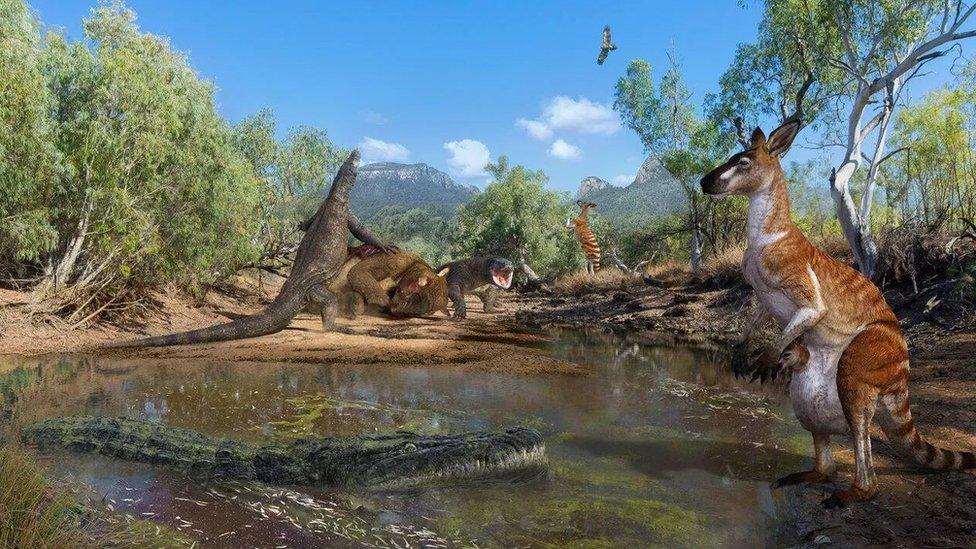Monster kangaroos, lizards and crocs once roamed Australia
- Published
- comments

An artist's impression of several of the species discovered, including giant kangaroos, lizards and crocodiles
The remains of possibly the largest kangaroo to have ever existed on Earth have been discovered in Australia.
The massive marsupial - still to be named - was more than 2.5 metres tall and weighed about 274kg, which is three-times the size of an average roo.
Researchers said the fossils - discovered in a site in northern Queensland - were just 40,000 years old, proving that these monster creatures once roamed the planet alongside humans.
However, scientists believe that humans alone didn't cause the extinction of these fabulous creatures in Australia.
Marvellous megafauna
The fossils of a monster kangaroo, which weighed as much as two grizzly bears
Paleontologists from the Queensland Museum and the Australian Research Council also found fossils of at least 12 other species of enormous animals called megafauna.
These include seven-metre long predator crocodiles, giant lizards that weighed the size of a small car, and the world's largest wombats.
A marsupial lion called Thylacoleo carnifex, which could weigh about 130kg, was also discovered by scientists.
Scientists believe this meat-eating lion had the strongest bite of any mammal ever.
Climate change wiped out creatures
An extinct giant Marsupial diprotodon jaw bone discovered on the fossil site in Australia
The discovery of these fossils challenges the idea that human hunting drove these large animals into extinction.
"We cannot place humans at this 40,000-year-old crime scene, we have no firm evidence. Therefore, we find no role for humans in the extinction of these species of megafauna," said paleontologist Scott Hocknull, lead author of the study from Queensland Museum.
"Climate and environmental change was also a big driver," said Anthony Dosetto from the University of Wollongong.
"Successive loss of water flow, intensified drying, increased burning and vegetation change" was the reason for the animals dying out.
The findings were published in the journal Nature Communications.
- Published6 August 2019
- Published11 June 2019
- Published30 July 2019
